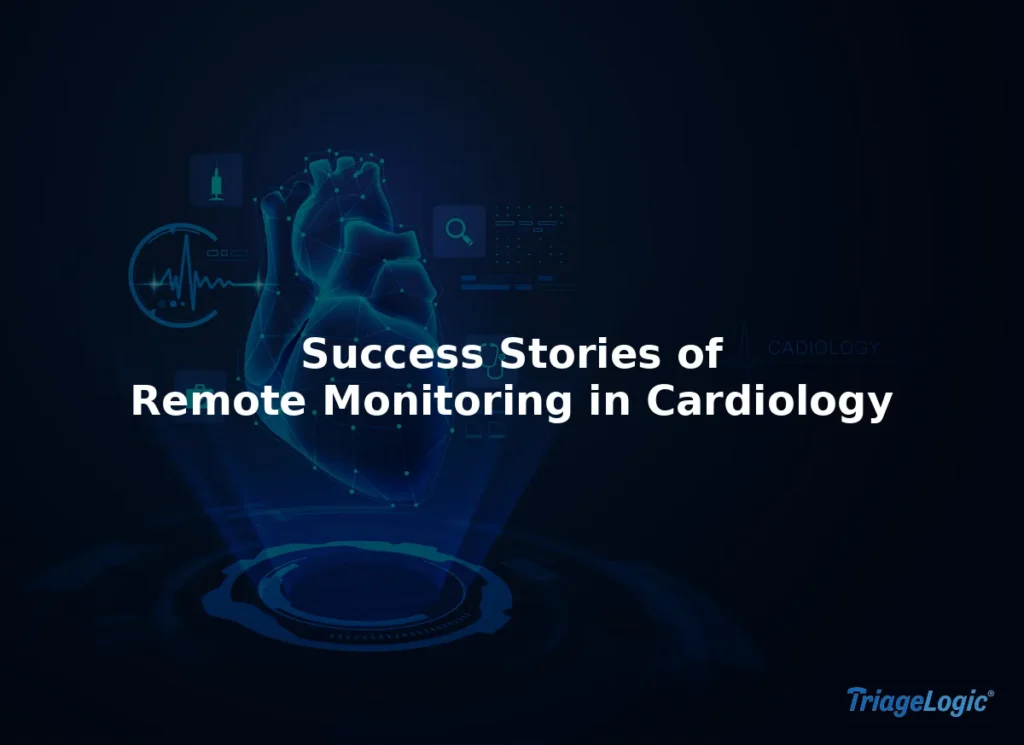Success Stories of Remote Monitoring in Cardiology
Cardiologists across the country are transforming care delivery thanks to remote patient monitoring (RPM). They’ve been able to see measurable improvements in health outcomes, reduced readmissions, and increased patient engagement. These success stories of remote monitoring in cardiology demonstrate how real-time data and nurse-driven oversight can enhance care without overwhelming clinical teams.
Why RPM Matters
Cardiac patients often face complex, high-risk conditions like hypertension, arrhythmias, and heart failure. RPM offers a way to track vitals continuously and intervene before symptoms deteroriate — but only when paired with clinical support and smart workflows. The examples below outline how cardiologists can use RPM to deliver safer, more connected care while reducing administrative overhead.
Success Story #1: Lowering Readmissions in Heart Failure Patients
A cardiologist enrolled her high-risk heart failure patients in an RPM program. Each patient received a cellular blood pressure monitor and pulse oximeter, which transmitted data back to her practice each day. Nurses monitored readings and escalated any concerns directly to the cardiologist. Over six months, the practice saw a 40% reduction in 30-day readmissions — proof that real-time oversight can prevent avoidable hospital stays.
Success Story #2: Improving Hypertension Control Through Daily Monitoring
That same cardiologist treats many patients who struggle to manage their blood pressure between visits. By using intuitive RPM sensors that required no setup, patients became more engaged with their own health. This led to more accurate long-term readings that allowed the cardiologist to quickly identify when medications needed to be adjusted. The result: a 30% increase in the number of patients achieving target blood pressure within three months.
Success Story #3: Enhancing Staff Efficiency Without Adding Work
Like many practices, this cardiologist’s team was stretched thin. Rather than hire additional staff, her RPM vendor was able to coordinate device setup, data management, and clinical review on her practice’s behalf. Her team reported a 70% decrease in time spent manually reviewing patient logs, and was able to focus more on direct patient care.
Lessons Learned From These RPM Wins
- Start With High-Risk Patients: Enroll those who are recently discharged or at high risk of hospitalization.
- Leverage Clinical Monitoring: Use outsourced nurse support to evaluate patient vitals, prevent alert fatigue, and ensure proper follow-ups.
- Measure and Share Outcomes: Track readmissions and patient engagement to evaluate a program’s influence.
Note: Make sure that you’re using the correct CPT codes when billing for RPM services. This is important for compliance and proper reimbursements.
How TriageLogic Offers RPM Success
Our turnkey RPM platform, RemotePatientPro™ (RPP), simplifies device management, data collection, and training. It also includes 24/7 nurse monitoring so that no abnormal readings are missed. Together, these features establish a proven model that supports success stories like above, benefiting cardiologists who manage patient populations of all sizes.
Create Your Own RPM Success Story
If you’re ready to improve health outcomes and modernize cardiac care, let’s talk about an RPM program! Contact us today to learn more and schedule a demo.

